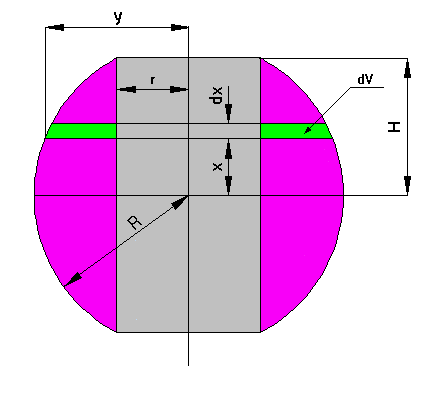
2nd Puzzle Answer

If we call H the dimension from the centre of the sphere to one of the flat ends, R the sphere radius, r the cylindrical hole radius and x the distance from the centre of the sphere to some plane normal to the cylinder axis (refer attached picture). This plane intersects the sphere at a distance y from the axis.
Using Pythagoras's theorem we have:
r2 = R2 - H2
y2 = R2 - x2
The volume dV between the plane at x and that at x + dx is :
dV = PI * ( y2 - r2 ) * dx
Replacing y2 and r2 by their value above, we get:
dV = PI * ( H2 - x2 ) * dx
Obviously this shows that the volume is independent of R and depends on H only, if one makes R decrease to H then the internal cylinder decreases in volume and at the limit it becomes 0 when the sphere radius is equal to H
The answer therefore is V = 4/3 PI * H3 . It is also the simplest way I know to prove that the volume of a sphere is 4/3 PI * R3, simply integrate dV (very simple) then make H tend to R.
V = 36 Pi cubic centimetres.
 Back to Puzzle Page
Back to Puzzle Page